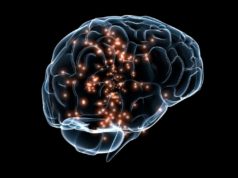Neuralstem Inc announced that the final results from the phase I safety trial using NSI-566 spinal cord stem cells in the treatment of amyotrophic lateral sclerosis (ALS) were published in the peer-reviewed journal, Annals of Neurology.
In Intraspinal Neural Stem Cell Transplantation in Amyotrophic Lateral Sclerosis: Phase I Trial Outcomes, results were updated from phase I interim data, reported earlier, to include data from the last six patients in the trial. These six patients were the first to receive cervical stem cell transplants. Three of them were also the first to be transplanted along the length of their spines, in both the lumbar and the cervical regions. The results showed that NSI-566 human spinal cord stem cells can be safely transplanted in both the lumbar and cervical spinal cord segments, did not accelerate disease progression, and warrant further study on dosing and therapeutic efficacy. Furthermore, the researchers were able to identify potential therapeutic windows, suggesting that more injections, as well as multiple injections, are better and may increase both the length and the magnitude of the potential benefits. This is consistent with the hypothesised neuroprotective mechanism-of-action for this cell therapy.
Since concluding phase I, the trial has progressed to phase II at three centres in USA, Emory University Hospital in Atlanta, Georgia, the ALS Clinic at the University of Michigan Health System, in Ann Arbor, Michigan, and Massachusetts General Hospital in Boston, Massachusetts, which treated its first patient in February. Treatment of three of the five phase II cohorts has been completed.
“Although this was a phase I trial, and functional outcome data were collected for the purpose of assessing safety, we performed secondary analyses of these data as a means to gain insight into how cellular transplantation affected disease progression rates and to inform outcome assessment approaches in future trial phases,” says Eva Feldman, director of the A Alfred Taubman Medical Research Institute, director of research of the ALS Clinic at the University of Michigan Health System, principal investigator for the NSI-566/ALS trial and lead author. Feldman is also an unpaid consultant to Neuralstem.
“Pre-surgical disease progression rates for the various functional outcome measures were calculated to create slopes for each patient, so that we could determine if post-surgical data points, at six, nine, 12 and 15 months, improved relative to predicted points. We also did analyses to determine which, if any, functional outcome assessment most closely correlated with the overall ALSFRS-R scores,” says Feldman. “Comparison of the outcome data to predicted outcome points in group E (patients who received both lumbar and cervical injections) revealed improvements in a significant number of measures at six, nine, 12 and 15 months post-surgery. Overall, 50% of the patients in the trial showed improvement across multiple clinical measures at the same time points. We also found that a measure of grip strength correlated most closely with the overall ALSFRS-R scores.”
Feldman adds, “Finally, we conducted an analysis to identify the most biologically active period of the injected cells for the patients receiving both lumbar and cervical injections. This analysis reveals that the maximal periods of benefit correlate with the two surgical interventions. Importantly, as the ‘bell-shaped curve’ associated with each intervention is likely due to disease progression, increasing the total cell dose, and applying multiple applications of these stem cells, may increase both the length and magnitude of the potential benefit. We are of course exploring this very dosing regimen in our ongoing phase II trial.”













